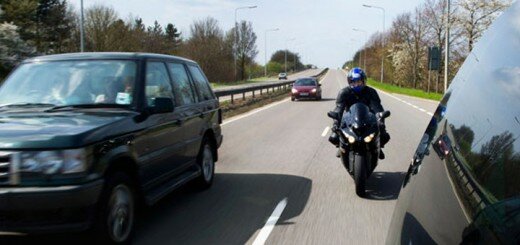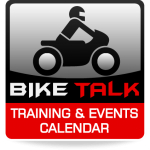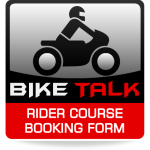You are riding along a country road, and can see the road ahead curving sharply to the right. It’s a blind curve, so it’s hard to assess just how sharply you will need to turn. Could there be traffic coming toward you when you go around the curve? Do you need to adjust your speed and steering to get a safe lean angle and maintain a safe lane posion?
What should you do?
If you have driven a car, you may think that steering is simple — just turn the steering wheel the way you want to go. But to steer a motorcycle you need to know how to lean into your turn and keep correctly balanced. You also need to understand the different types of motorcycle steering: low-speed steering and countersteering.
Low-speed steering
At speeds of up to 10 km/h, the motorcycle is unsteady, wanders easily and requires constant balancing and steering correction. To steer at slow speeds, turn the handlebars to the left when you want to turn left. Turn the handlebars to the right when you want to turn right.
Counterbalancing
In slow turns, lean the motorcycle only
if necessary and remember to counterbalance — keep the motorcycle balanced by keeping your body upright.
Countersteering
For most normal riding, your speed will be higher than 10 km/h. You will find that when you get up to 15 to 20 km/h, the bike feels much steadier. At this speed, the motorcycle must lean to make a turn. This lean counteracts the inertia that pushes the bike in a straight line.
You make the motorcycle lean by countersteering. It may seem to be the opposite of what you should do. If you want to turn right, you gently push on the right grip. This makes your bike lean to the right, and that will take you into a right turn.
At medium or high riding speeds, the rider and the motorcycle should both lean into the curve at the same angle.
Handling Curves
When you go around a curve, you are putting pressure on the available traction (the grip your tyres have on the road). Your motorcycle is fighting the inertia that is trying to push you in a straight line. As your motorcycle leans into the turn, there is also a side force on your tyres.
The faster you go, the harder you have to push on the handlebar to turn into the curve. And the harder you push, the more your motorcycle leans and the more traction you use up. When you have used up almost all your available traction, several things could happen:
• If you find you need to lean just a bit more to stay in the curve, you could run out of traction or ground clearance, skid and fall.
• If you brake abruptly, you could lose traction and skid.
• If you hit a wet or rough patch on the road, you could lose traction and fall.
The lesson is: Slow down to a safe speed before you enter a curve. A safe speed lets you lean at a moderate angle — if you hit a patch of slippery road or need to tighten your curve, you will have reserve traction and be able to lean a lile more.
Countersteering: Push right—lean right—go right
Push left—lean left—go left










